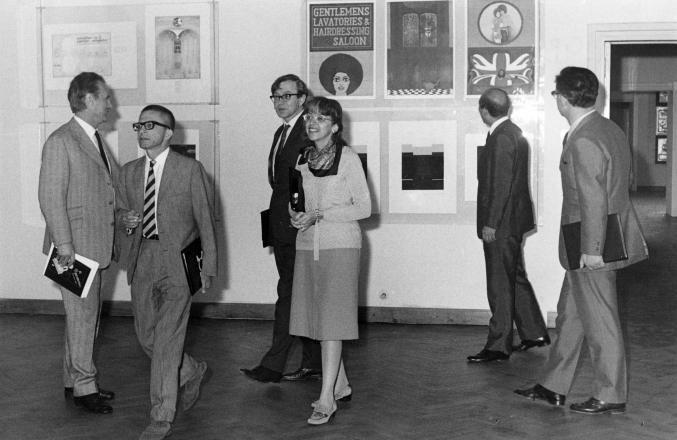
Fine art has long been a respected part of Slovenia’s cultural identity, but occasionally, the country has also been on the forefront of global trends. The postwar era saw Ljubljana becoming a major center of printmaking with the birth of the so-called Ljubljana School of Graphic Arts.
The movement had its roots in the chaos of World War II, when artists who had chosen to participate in the Partisan resistance became well-known for making prints, often in very difficult conditions. After the war, Božidar Jakac, an accomplished painter and printmaker, helped to set up what is now known as the Academy of Fine Arts and Design. Jakac was determined to encourage talented young artists to work with various different media and was a passionate promoter of printmaking. In 1948, Zoran Kržišnik emerged as leading figure in the newly founded Modern Art Museum. Kržišnik and his institution also became key ingredients in the eventual establishment of the Ljubljana School – an informal association of modernist printmakers.
Political circumstances of the time were also fortunate for young printmakers. In the same year that the Modern Art Museum opened its doors, Yugoslav leader Josip Broz Tito broke with Joseph Stalin, and in the years that followed, the previously favored Social Realist style of visual arts slowly fell out of favor. The authorities became more willing to accept more experimental approaches, and the path towards modernism was soon wide open.
The founding of the Ljubljana Biennial of Graphic Arts in 1955 enabled talented young artists from Slovenia to introduce their work to an international audience. The biennial soon acquired a reputation far beyond the borders of Slovenia, and in the decades that followed, some of the world’s leading artists exhibited their works in Ljubljana. In 1963, Robert Rauschenberg, one of the most prominent artists of the 20th century, won the Grand Prix at the Ljubljana Biennial – a year before he made his debut at the famous Venice Biennale. Soon, even Tito himself paid a visit to the exhibition.
Because of Yugoslavia’s position between the East and the West, the Biennial was able to attract top artists from around the world, including many from the Third World, which then formed a part of the Non-Aligned Movement. For printmakers, Ljubljana emerged as a must-stop on world tours, and the Ljubljana School became internationally prominent. It also stayed in touch with the latest trends. When the methods of choice changed – from etchings to serigraphy, for instance – the Ljubljana artists were quick to adopt new techniques.
However, the eternally changing trends in the art world ultimately led to the decline of the Ljubljana School. By the late 1980s, more avant garde art forms had overshadowed graphic arts, leading to the decline of both Slovenian graphic arts and the Ljubljana Biennial. After Kržišnik’s retirement, a new management team was determined to emphasize new styles and genres in graphical arts, and the traditions of the Ljubljana School were slowly pushed aside.
Since then, art promoters have made several attempts to revive Slovenia’s printmaking tradition. Regardless of their ultimate success, the Ljubljana School has a guaranteed place in the history of art - a reminder of a time when Slovenia was at the cutting edge of a major art forum.

































































